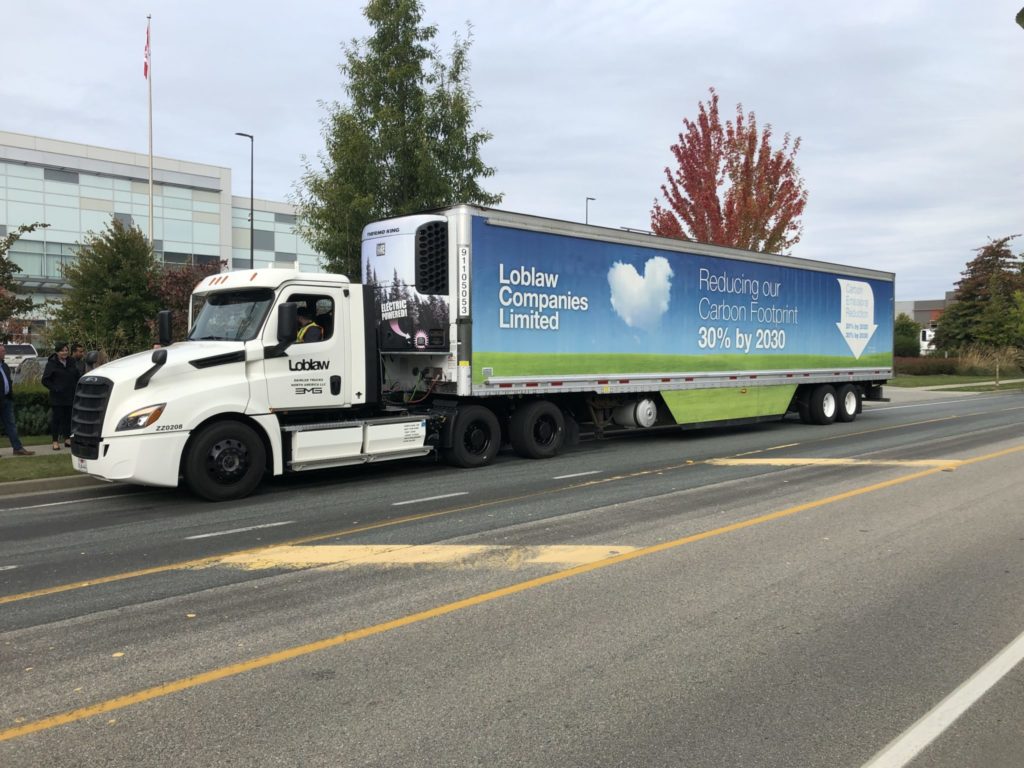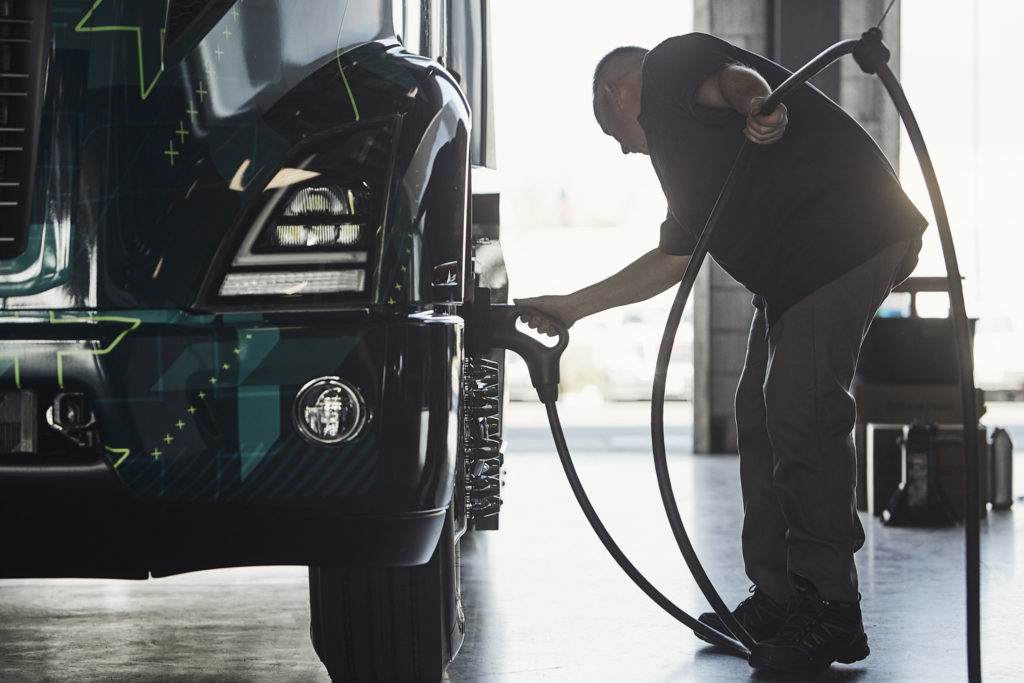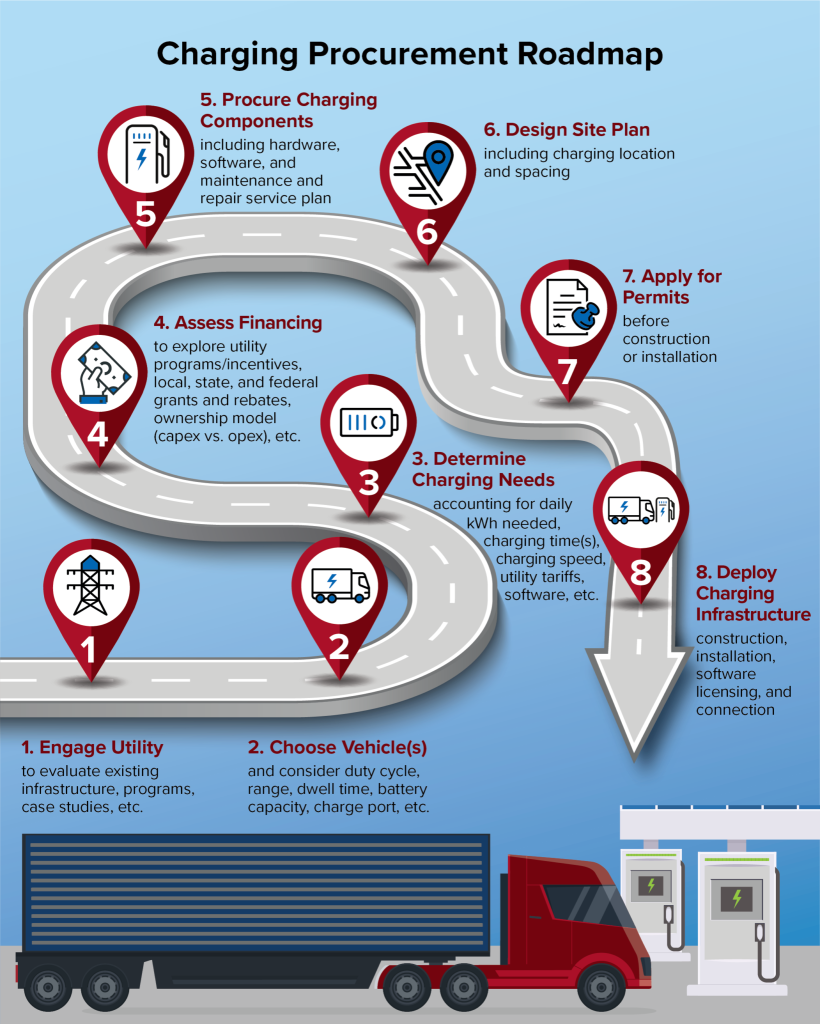Electric truck benefits vary across Canada: Report
FORT WAYNE, Ind. – The Greater Toronto Area, Greater Montreal, and “Cascadia” region stretching between Vancouver and Oregon have been identified as some of North America’s most favorable settings for electric truck rollouts.
The findings emerge in the latest update to the North American Council for Freight Efficiency (NACFE) High Potential Regions for Electric Trucks Deployments report, which examines factors ranging from available technologies to incentive programs.

Other favorable regions identified by the report include Northern California, Southern California, the Texas Triangle, Colorado Front Range, and the Northeastern U.S.
The report emerged the same day that Environment and Climate Change Minister Jonathan Wilkinson has tabled legislation to set binding targets to bring Canada to net-zero carbon emissions by 2050.
Much of North America’s early work on electric trucks has undeniably focused on California, where 40% of new Class 7/8 tractors will need to be zero-emission vehicles by 2035. But as that market matures, the search is on to prioritize other regions for future deployments, NACFE says.
Electric truck financial incentives
Available financial incentives are expected to play a key role in any early adoption of electric vehicles, which carry sticker prices that are almost double those linked to diesel-powered equipment.
And the support varies.
“Similar to the U.S., we found that policies and incentives to support electric truck adoption vary drastically by region, with some jurisdictions committing significant budgets to robust incentive programs, while others have done little or nothing to support electric truck adoption,” says Jessie Lund, senior associate at the Rocky Mountain Institute.
“For example, Quebec offers incentives for both vehicles and charging infrastructure via its Ecocamionnage and Transportez vert programs, British Columbia offers vehicle funding through its Specialty Use Vehicle Incentive (SUVI) program, and most provinces currently have no funding available to support the electrification of private trucking fleets.”
The B.C. SUVI offers a maximum of $100,000 per vehicle, and another $2 million was invested in the program this year. An additional $31 million has been committed under the Stronger BC Plan, bringing related commitments to $35.5 million so far.
Quebec’s Ecocamionnage program offers grants of up to $75,000 to acquire equipment. While the Transportez vert program offers up to $10,000 per new electric truck or van with an MSRP above $60,000, no vehicles have been approved so far.
Since the report was compiled, Quebec committed $3.6 billion to help reduce transportation-related GHG emissions over the next five years. And the federal government is in the midst of developing a Clean Fuel Standard that could include financial incentives for fleets shifting to low- or zero-emission equipment.

Canada’s electric vehicle advantage
Canadian fleets have some advantages over their U.S. counterparts when it comes to support for electric vehicles.
“Canada leads the U.S. when it comes to national goals and what we refer to as ‘expressed interest’ in zero-emission trucks,” Lund says.
Examples of that include the national goal of net-zero carbon emissions by 2050, and the federal government’s pledge to partner on Calstart’s Global Commercial Vehicle Drive to Zero Program that also includes Quebec, B.C., the K’uL Group, and Vancouver.
While the Calstart program doesn’t have specific sales targets for electric trucks, partners pledge to help make zero-emission technologies “commercially viable” in their regions as early as 2025.
“Canada leads the U.S. when it comes to national goals and what we refer to as ‘expressed interest’ in zero-emission trucks.”
– Jessie Lund, Rocky Mountain Institute
“Canada also offers a Zero Emission Vehicle Infrastructure (ZEVIP), which plans to spend $130 million over five years for ZEV charging and refueling stations. One of the targeted infrastructure streams includes medium- and heavy-duty vehicle fleets,” Lund says.
The U.S. doesn’t have a national program, although the incoming Biden administration has a climate plan that commits to major public investments in electric vehicle charging stations.
Canada isn’t always taking the lead, however.
“Canadian electric utilities appear to be further behind those in the U.S. when it comes to supporting buildout of ‘make-ready’ infrastructure for charging,” Lund says. “While utilities in California, New York, and Utah have approved funding for heavy-vehicle charging infrastructure, we were not able to find any such utility programs in Canada.”
Electric truck advantages
NACFE’s analysis was not limited to incentives alone.
The think tank considered climate-related challenges such as extreme heat or cold that can add auxiliary power loads and lower battery performance, electricity pricing, air quality, freight flows, and interest from policymakers.
Regional haul operations that return to base after every shift or workday offer “prime” opportunities for electric truck deployments, it found.
Battery-electric trucks to be released over the next three years are expected to offer an average range of 460 km between charges. Given that most people wouldn’t let batteries drop below a 20% state of charge, NACFE gives them a conservative maximum range of 368 km.
Ranges are maximized when operating at temperatures around 21 C.
The report also considers the share of electricity generated by carbon-free sources such as hydro, wind, solar, biomass, and nuclear generation, as well as the percentage generated from coal and coke.

The cost of energy
The cost of running electric trucks can vary widely by region, however. For example, electricity costs an average 12.03 cents per kilowatt hour in Toronto, 7.03 cents in Vancouver, and 5.64 cents in Montreal.
Those prices still compare favorably to diesel trucks that average 6 mpg (39.2 liters per 100 km). NACFE says such savings amount to 56 cents per mile (90.12 cents per km) in B.C. and Quebec, and 35 cents per mile (56.33 cents per km) in Ontario.
But even the charging practices can affect the potential benefits.
“Demand charges will likely be more of a challenge for small deployments in which the charge cannot be spread over multiple vehicles; for fleets with operations that require multiple trucks to charge at the same time; for fleets that do not actively manage demand or that may accidentally charge multiple trucks at the same time; and for quick-turn operations that necessitate fast charging, which requires higher power levels,” the report notes.
Related charging expenses also include the cost of the charger, software and installation, or prices markups that are linked to charging-as-a-service models.
Discussions around establishing corridors of public chargers are unlikely to have commercial implications because of required charging times and available spaces, it adds.
Considering electric trucks
While policies and incentives to support electric truck investments vary widely, NACFE is urging fleets to collaborate with policymakers, regulators, utilities, and other regional stakeholders to advance zero-emission vehicles.
“In considering where to deploy electric trucks, there’s a lot to think about,” UPS director – global stability Patrick Browne notes in the report.
“Everything from charging infrastructure to which climates the technology operates the best in, to where the most funding and incentives are available. This framework helps not just fleets, but utilities, OEMs, policymakers, and others think through the many considerations to ensure that wherever they deploy electric trucks, they’re a success.”

Have your say
This is a moderated forum. Comments will no longer be published unless they are accompanied by a first and last name and a verifiable email address. (Today's Trucking will not publish or share the email address.) Profane language and content deemed to be libelous, racist, or threatening in nature will not be published under any circumstances.
Hello,
I am a heavy duty mechanic, I would like to become a certified EV technician on transport trucks. Could you tell me where a person might find such a course?
Thank you